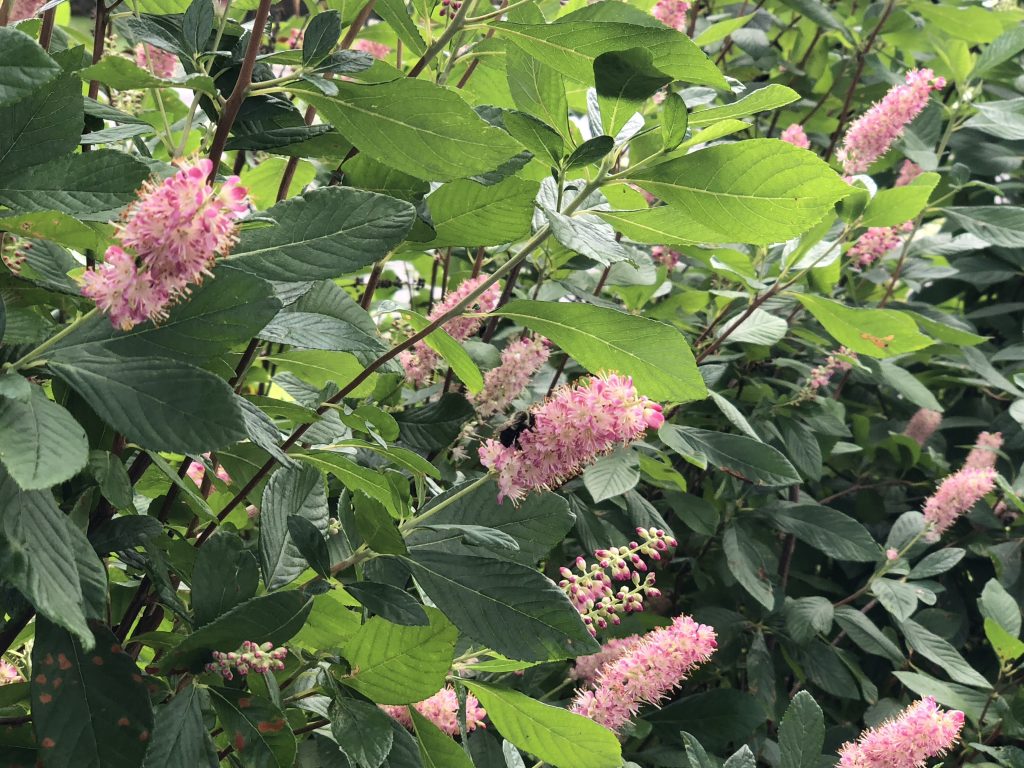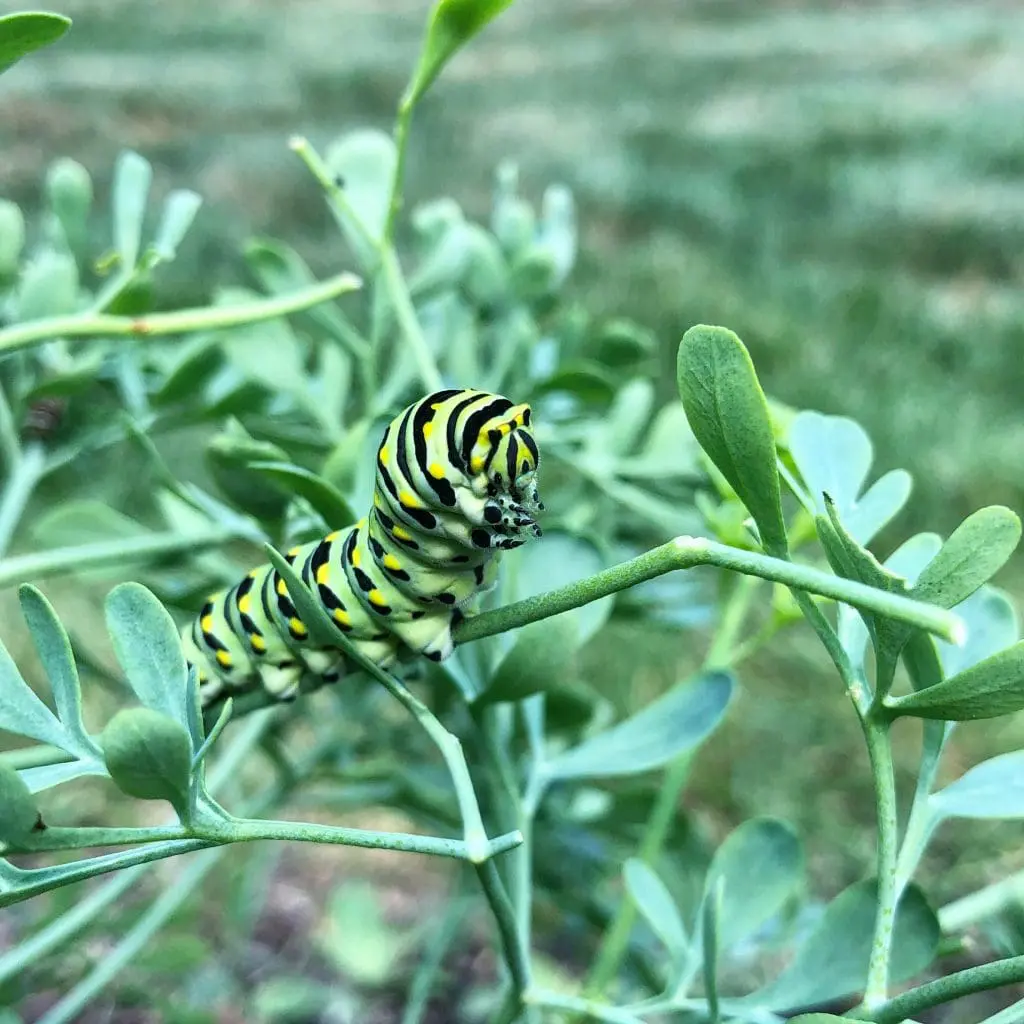Just one week into spring and there is already a noticeable buzz in our communities about an exciting initiative: creating Pollinator Pathways through Fairfield and Westchester counties. Many thanks to the organizers in each town who put together a staggering number of informative events across many towns (see the upcoming events calendar!!).
As an ecological landscape service, we thoroughly applaud and support this effort. We have installed hundreds of organic pollinator gardens, meadows, and Certified National Wildlife Habitats on behalf of our clients, but this initiative goes further.

[Above: Native Bee on Clethra alnifolia ‘Ruby Spice’.]
A Pollinator Pathway is designed to create a corridor for pollinators to link larger habitats together. These connected, streamlined habitats mitigate the current habitat fragmentation from urban and suburban development. With a focus on planting known nectar/pollen sources for adults AND host plants for larvae, the initiative increases plant biodiversity, reclaiming ubiquitous lawns for a more vibrant array of flora (and fauna!).

[Above: Monarch Butterfly on New York Ironweed]
In regards to habitat restoration, the sum is greater than its parts. Creating Pollinator Pathways mapped to include households with pollinator gardens is an important ecosystem-level expansion of the vision; more than any of our individual efforts could achieve. Westchester and Fairfield counties represent important flyways. To link preserved areas of Pound Ridge, Wilton, and Ridgefield with coastal areas of Westport, Darien and Rye, for example, is a huge improvement from current patchwork preservation efforts.
Pollinator Pathways are an exciting unifying force of homeowners, non-profits, municipalities and private sector businesses toward a like-minded goal of counteracting biodiversity loss, particularly of pollinators and native plants.
Why do we need Pollinator Pathways?
If you’ve been following the news (or our social media) you may have noticed the reports that insect populations are declining. The Insect Apocalypse Article in NY Times Magazine is a must read. Some startling summaries:
“The [2016] German study found that, measured simply by weight, the overall abundance of flying insects in German nature reserves had decreased by 75 percent over just 27 years. If you looked at midsummer population peaks, the drop was 82 percent.”
Habitat loss and fragmentation from climate change and development, plus an increase in the use of landscape pesticides are thought to be leading factors in the ‘insect apocalypse.’ Two large studies in Canada and Europe published in 2017 confirmed that neonicotinoids, found in many pesticides, fungicides and herbicides contribute to colony collapse in bees. Neonicotinoids were also found to persist in the environment long after the growing season and affect uptake from plants outside of the sprayed area.

[Above: Native Bee on New England Aster]
Joseph Wilson, of Utah State University, reported to The Atlantic that “Habitat connectivity at that scale [of Pollinator Pathways] could help these smaller bees disperse more efficiently, and contribute to a more diverse and healthy community of species,”
Why You Should Care About Bugs
Insects are the foundation of the food chain, and they require specific food sources as larvae and adults. Most native pollinator species have evolved alongside native plants for habitat and food sources.

[Above: Monarch Butterfly Caterpillar on Baptisia australis (right next to the Asclepias tuberosa!)]
Insect and animal pollinators play key roles in the ecosystem; they are responsible for 90% of plant pollination, and 30% of agricultural production! Insects also are a main food source for birds, demanding staggering quantities. As entomologist Dr. Doug Tallamy writes in Bringing Nature Home, it takes an amazing 6,000 – 9,000 caterpillars to raise one clutch of chickadees! (Each chick eats approximately 350 – 570 caterpillars PER DAY!). We must protect these foundational species before we see dire ecosystem consequences.
What About Organics?
Of course, planting the right plants has little effect if they are covered in synthetic pesticides! Stay tuned for our upcoming blog post on the Truth About Pollinator Pathways and Organics! And follow us on Instagram and Facebook for more photos & videos of pollinator friends in our gardens! @GreenJayLandscaping
Love the idea of the Pollinator Pathway? We can help you turn your yard or property into an organic pollinator habitat. Contact us for landscape design and installation services: (914)-560-6570.
—
Kathryn Saphire
VP of Landscape Development & Marketing
914-560-6570